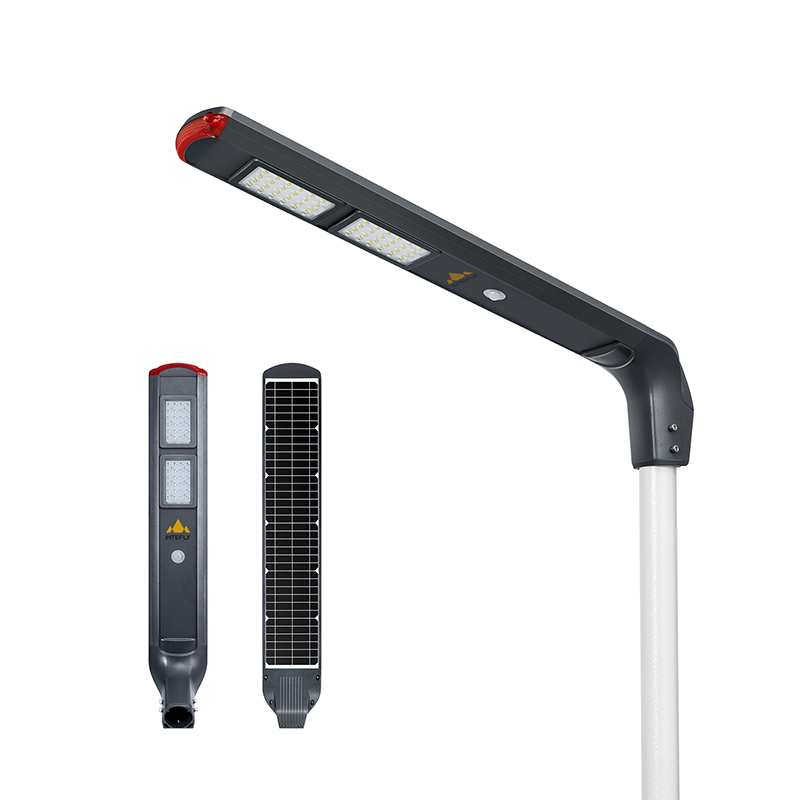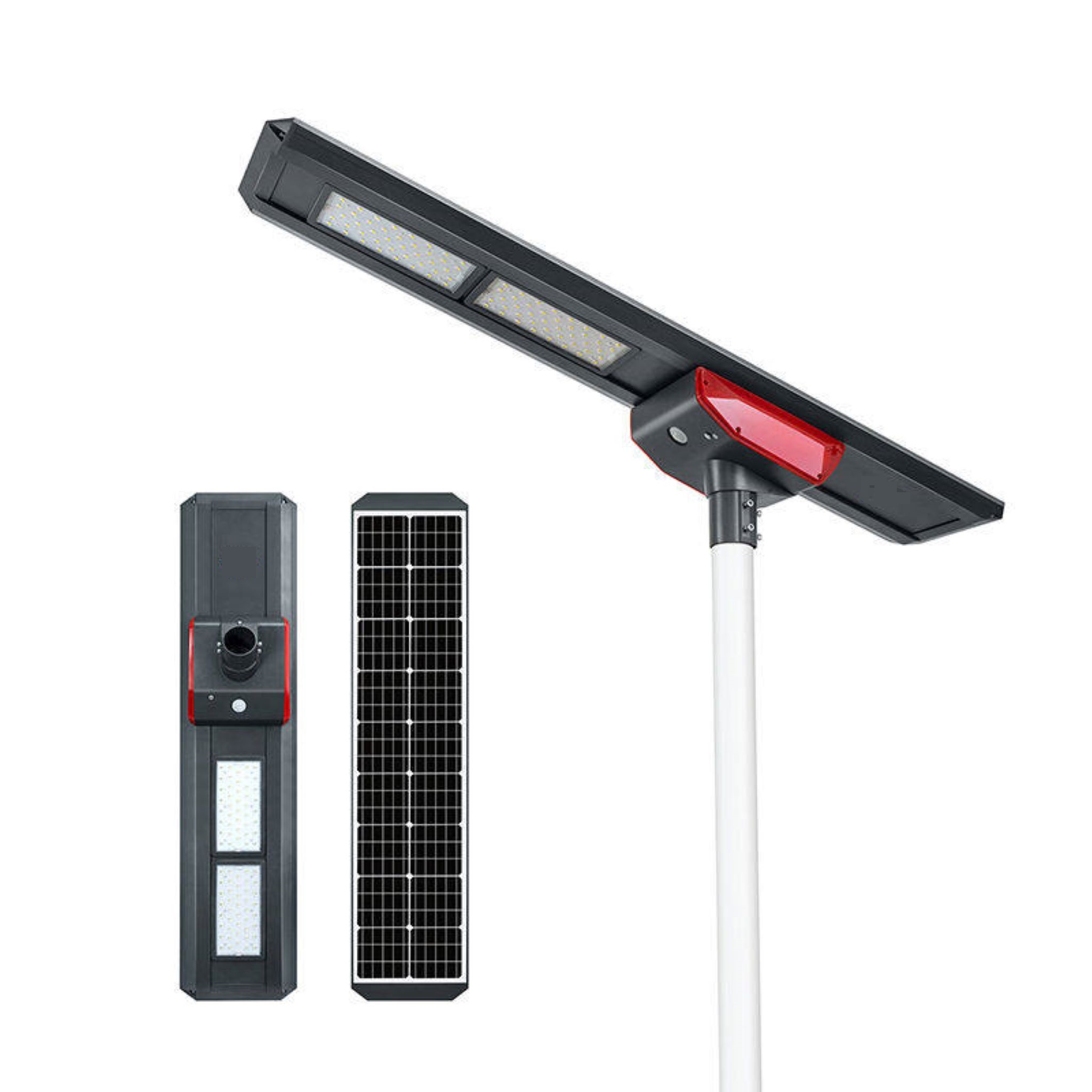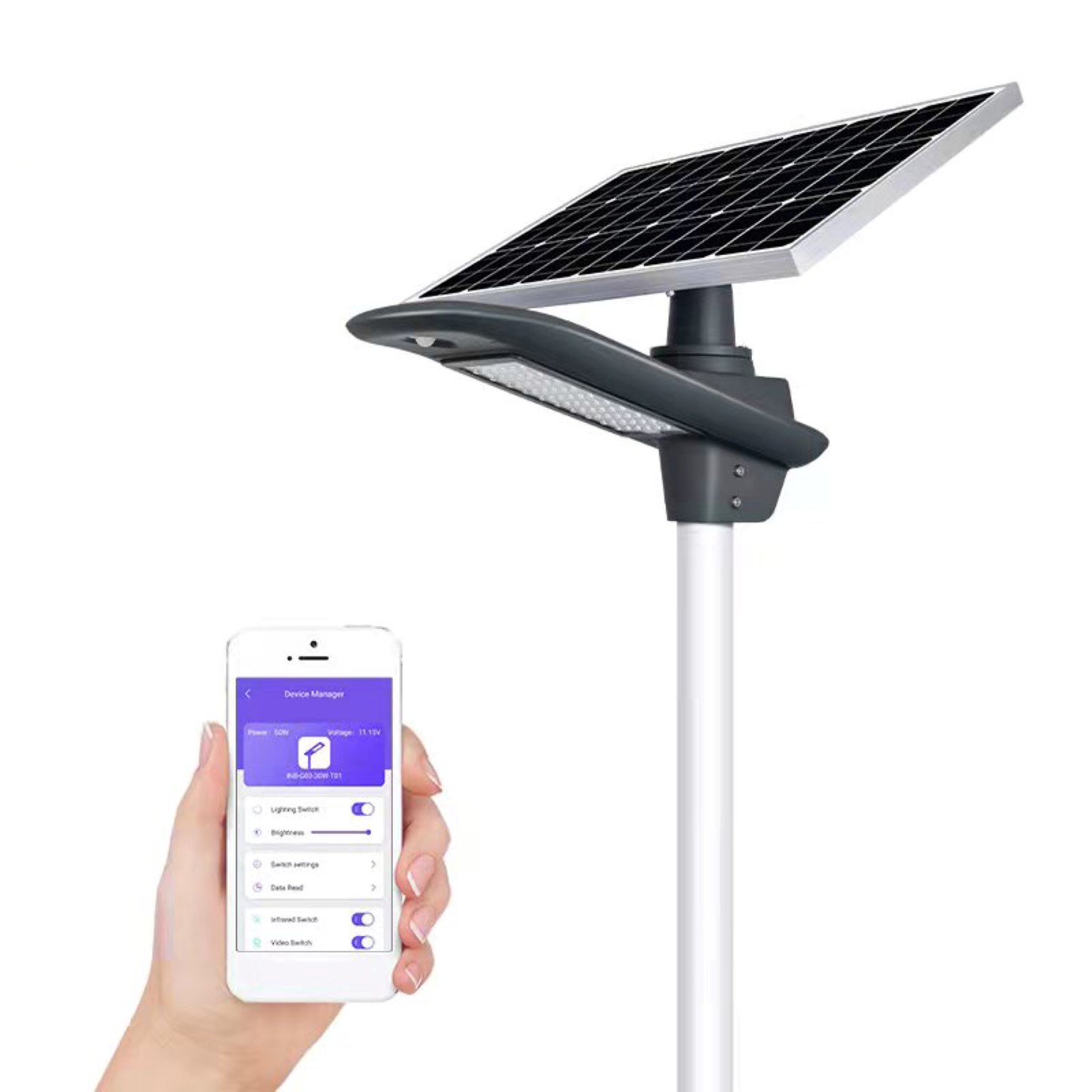Blog
Guide to Choose All in One Solar street Light

1. What is an All in One SOLAR STREET LIGHT?
All in One Solar street Light, also named Integrated solar street lamp, refers to the latest generation of solar LED street lamp which combines solar panel, battery, controller and LED lamp in one lamp body. The most significant difference between split solar street lamp and the new generation of integrated solar street lamp is the integration of structure. Each generation of solar street lamps has advantages and limitations in practical application. We will discuss how to select integrated solar street lights in following.
2. How to choose integrated solar street lamps?
2.1. Monocrystalline or polycrystalline panels, which one is more suitable for integrated solar street lights?

The solar panel is one of the components of the lamp body. The durability of solar integrated LED street lamps is directly proportional to their quality. Therefore, it is one of the factors to consider when choosing solar street lamps. Generally speaking, the performance of monocrystalline silicon is better than that of polycrystalline, especially under cold conditions, monocrystalline silicon has a higher energy conversion rate than polycrystalline.
Due to structural limitations, the solar panels of integrated solar street lamps are smaller than those of integrated solar street lamps. The solar panel of the split solar street lamp is separate from the lamp body and can be resized as needed. However, the same cannot be said for multi-functional solar street lamps. In addition to being constrained by the size of street lamps, the size of solar panels must also take into account the amount of solar energy that can be converted at a given time.
In the early design, to accommodate these two variables, the size of the top panel of the integrated solar street lamp was increased, making it larger than the AC-powered LED street lamp with the same power, which not only went against the basic concept of pursuing simplicity, but also went against the aesthetic of modern fashion style. So solar panels using monocrystalline silicon is undoubtedly the best solution.
2.2 Which battery is the best for all-in-one solar street lights?
Lead-acid battery, lithium battery and lithium iron phosphate battery are recognized as three kinds of batteries that can be used for integrated solar street lamps. Lead-acid batteries can be reused 300 to 500 times and have a lifespan of two years. Lithium battery can be charged more than 1200 times, the service life of 5-8 years, lithium iron phosphate battery can be charged more than 2000 times, the service life of more than 8 years. Therefore, it is also important to know the type of battery used in solar integrated street lamps when choosing lamps. Price is not the only consideration when choosing an integrated solar street lamp. Lithium iron phosphate battery is small in size, long in life, and has good environmental protection value. Although expensive, it has been the first choice for integrated solar street lamp batteries. Lead-acid batteries are the least recommended because they pollute the environment, and lithium iron phosphate batteries have the highest energy density per unit.
2.3 Selection of solar street lamp installation bracket
Since the solar panel of the integrated solar street lamp is integrated in the lamp body, the installation Angle of the lamp body should not only consider the optimization of the amount of solar radiation received, but also consider the light distribution of the solar street lamp. As we all know, the optimal tilt Angle of solar panels depends on the latitude of the location where they are installed. The orientation of solar panels of integrated solar street lamps cannot be changed as freely as that of split solar street lamps. Street lamp is located in different latitude and longitude, the environment is different, the light distribution requirements are different. The installation Angle of the lamp body can be adjusted, which can better adapt to the diversity and complexity of the position of the solar street lamp, while taking into account the continuity, uniformity, solar radiation maximization and light distribution.
2.4 MPPT or PWM controller, which one is more suitable for all in one solar street lights?
Solar controller is used in solar photovoltaic system, its full name is solar charge and discharge controller, coordinate the work of solar panels, batteries, loads, is a very important component in the photovoltaic system. Make the whole solar photovoltaic system efficient and safe operation.
At present, the common solar charge and discharge controller on the market and PWM and MPPT two kinds. MPPT controller price is the highest, what is the difference between MPPT and ordinary controller? With the MPPT controller, the charging efficiency can be improved by 30%. In other words, the MPPT controller can generate 1.3 times the charging current of the same solar panel, so that the battery can be charged faster. How the MPPT controller works: The MPPT controller will track the maximum power point in the solar panel in real time to maximize the efficiency of the solar panel. The higher the voltage, the more power can be output through the maximum power tracking, thus improving the charging efficiency. In theory, a solar power system using MPPT controllers would be 50% more efficient than a conventional one, but in our actual tests, the environmental impact around us and the loss of all kinds of energy could ultimately be 20% to 30% more efficient.

MPPT vs PWM
3. The working principle of integrated solar street lamps

Working principle of integrated solar street lamps
Integrated solar street lights are completely closed operating environment, independent of the national grid operation. Solar panels capture sunlight and convert it into electricity when exposed to it. Solar panels charge the batteries during the day. At night, the battery provides power to the LED street lamps, allowing them to perform their lighting function.
4.Other aspects to pay attention to when choosing integrated solar street lamps
Since the integrated solar street lamp has the characteristic of independent operation, the variable factor of continuous rainy weather must be considered when choosing the integrated solar street lamp. The performance of the integrated solar street lamp improves with the duration of continuous cloudy days.
Although solar power is a free source of energy, the electricity it produces is extremely valuable. Battery capacity and power supply time are limited. Increasing battery capacity indefinitely is an impractical concept. Given the limited storage capacity of batteries, it's best to keep the lights on for as long as possible. Therefore, the combination of integrated solar street lights and intelligent control is very important. With intelligent control, you can set up on-demand lighting, and put the stored power where it is needed, without causing excessive waste.
5. Conclusion
Obviously, as a kind of outdoor lighting, when buying all-in-one solar street lamps, it is also required to carefully understand its power, IP rating, installation methods and other characteristics as you do usually. I hope this guide has been helpful.
6. Related Products
OLER1 OLER2 OLER3
CATEGORIES
CONTACT US
Contact: Royce O'young
Phone: 15920570517
Tel: 0086-20-37716973
Email: r.oyoung@oleder-lighting.com
Add: Room 335,#1 Xianke 1st Rd, Honglitronic Group,Huadu ,510890, Guangzhou,P.R.C.



 Sales
Sales